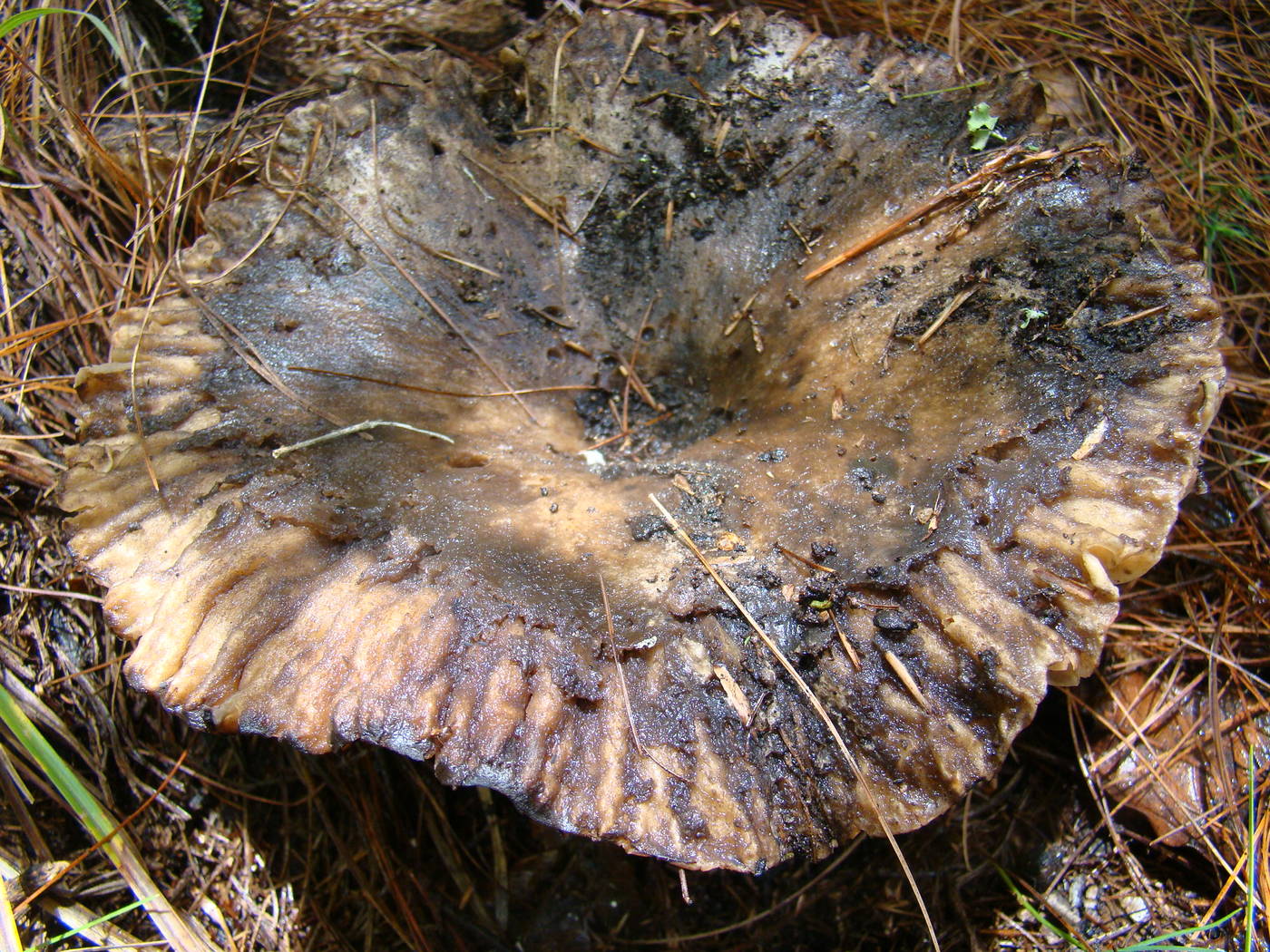
Local name: No local name known
Edibility: Edible but not good taste.
Habitat: Solitary to scattered and terrestrial.
Description: Cap: 5-20 cm in diameter, broadly convex when young, later flat with a central depression or shallowly vase-shaped, dry, more or less smooth but with a waxy feel, initially whitish but soon discolouring to brownish ashy grey or brown eventually almost black, the margin not lined and the skin not peeling easily. Hymenophore: Gills attached or running very slightly down the stem, thick, distant, white to cream, bruising and discolouring slowly reddish, then greyish to blackish. Stem: 3-8 cm tall and up to4 cm thick, whitish at first but soon darkening like the cap, bruising reddish then blackish and fairly smooth. Flesh: White, hard and bruising promptly or slowly reddish on exposure then blackish. Spore Print: White.
Comment: Russula nigricanshas widely spaced gills and small spores while Russula densifolia has close or crowded gills and larger spores. Russula anthracina also known as R. albonigra has closer gills and is far less common. It lacks the red phase of colouration when the flesh is cut.



